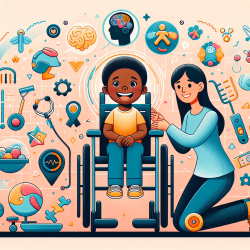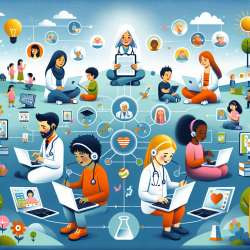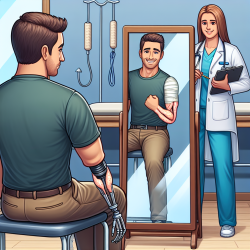Disasters can disrupt normal healthcare processes, with serious effects on children who depend upon regular access to the health care system. Children with medical complexity (CMC) are especially at risk. These children have chronic medical conditions and may depend on medical technology, like feeding tubes. Without clear, evidence-based processes to connect with healthcare teams, families may struggle to access the services and supports they need during disasters.A recent rapid scoping review titled "Communication in disasters to support families with children with medical complexity and special healthcare needs: a rapid scoping review" by Smith et al. (2024) sheds light on effective communication strategies during such crises. Here’s how practitioners can improve their skills by implementing the outcomes of this research.
Key Findings from the Review
The review identified four main themes essential for effective communication during disasters:
- Cooperative and Collaborative Planning: Involve families, professionals, and other stakeholders in pre-disaster planning. This includes creating clear communication protocols and ensuring all parties know their roles and responsibilities.
- Proactive Outreach, Engagement, and Response: Service providers should proactively reach out to families at the onset of a crisis. This can include checking in with families to ensure they have the resources they need and providing updates on the situation.
- Use of Existing Social Networks: Leverage existing peer and neighborhood networks to provide support. This can help ensure that families receive timely information and assistance.
- Return to Usual Routines: Re-establish care processes as soon as possible, including virtual connections if necessary. Address both mental health and physical functioning, and prioritize resumption of daily routines.
Implementing the Research Outcomes
Based on these findings, practitioners can take several actionable steps to improve outcomes for CMC during disasters:
1. Engage in Cooperative Planning
Engage directly with parents, caregivers, and children in disaster preparedness planning. Use surveys, interviews, and focus groups to gather input and create a comprehensive plan that includes clear communication protocols.
2. Proactive Outreach
When a disaster is anticipated or occurring, proactively reach out to families. This can be done through multiple channels such as phone calls, emails, and social media. Ensure that families have up-to-date contact information for their healthcare providers.
3. Leverage Social Networks
Encourage families to build and maintain relationships with neighbors and peers who can provide support during disasters. This can include sharing resources and information through social media platforms.
4. Prioritize Mental Health
Address the mental health needs of children and their families during and after a disaster. This can include providing virtual counseling services and ensuring that families have access to mental health resources.
5. Ensure Continuity of Care
Work to re-establish regular care routines as soon as possible. This may involve transitioning to telehealth services to maintain continuity of care. Ensure that families have the necessary technology and resources to access these services.
Encouraging Further Research
While the review provides valuable insights, there is still much to learn about effective communication strategies during disasters. Practitioners are encouraged to conduct further research and share their findings with the broader community. This can help refine best practices and improve outcomes for children with special healthcare needs.To read the original research paper, please follow this link:
Communication in disasters to support families with children with medical complexity and special healthcare needs: a rapid scoping review.










